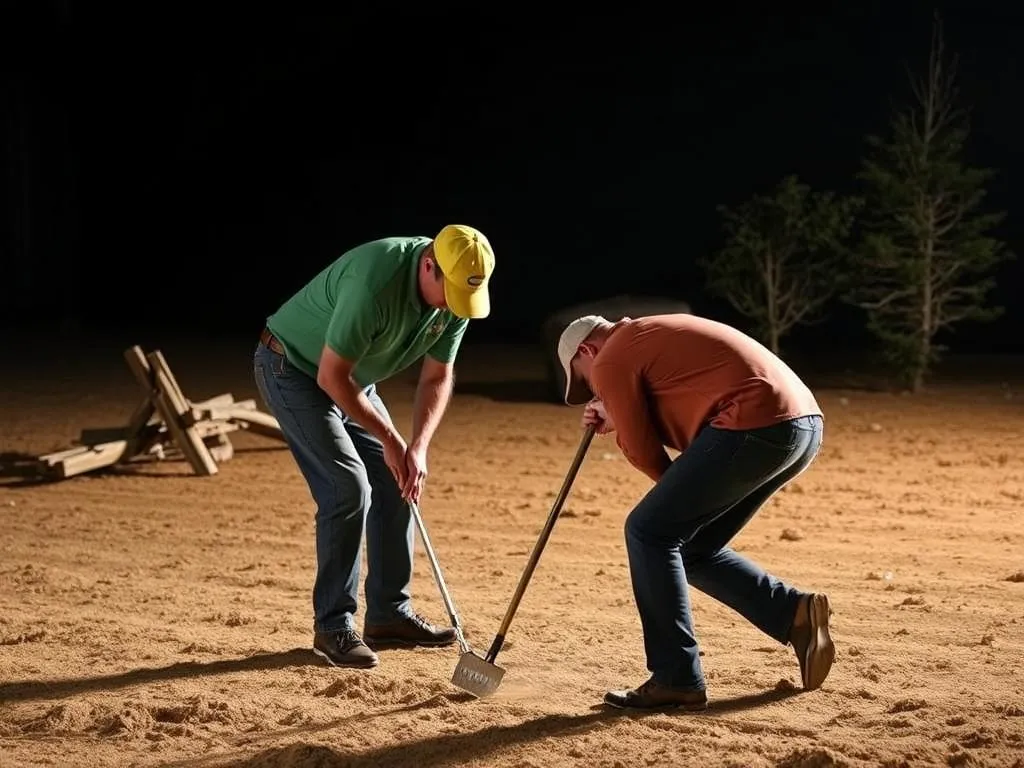Discover the secrets to becoming a better putting in or putter with this comprehensive guide. Learn essential techniques, avoid common mistakes, and explore the history of putting to elevate your golf game.
Mastering the Art of Putting in Golf: Techniques, Tips, and Insights for Golfers
Putting is often called the “game within the game” in golf, and for good reason. It’s the moment of truth, where a single stroke can make or break your scorecard. Whether you’re a weekend warrior or a seasoned pro, mastering the art of putting is essential for lowering your disability and enjoying the game to its fullest. But what exactly makes putting so crucial, and how can you improve your skills on the green?
This article delves into the world of putting, offering practical techniques, expert tips, and fascinating insights into the history of this pivotal aspect of golf. Let’s explore how you can transform your putting game and sink more putts with confidence.
What Is Putting in Golf?
Putting is the act of striking the golf ball with a putter on the green, aiming to roll it into the hole. Unlike full-swing shots, putting requires finesse, precision, and a keen understanding of the terrain. It’s a test of both skill and mental fortitude, as golfers must read the green, judge the speed, and execute a smooth stroke—all while managing the pressure of the moment.
Why is putting so important? Consider this: on average, putting accounts for about 40% of the strokes in a round of golf. That means nearly half of your game is decided on the green. A strong putting performance can save strokes, build momentum, and turn a good round into a great one. But to excel at putting, you need more than just a steady hand—you need the right techniques and mindset.
The Basics of Putting: Getting Started
Before diving into advanced strategies, it’s essential to master the fundamentals. Here’s a breakdown of the key elements every golfer should know:
- Grip: The way you hold the putter can make or break your stroke. A common grip is the “reverse overlap,” where the left hand (for right-handed golfers) sits above the right, with the index finger of the left hand overlapping the fingers of the right. This promotes stability and control.
- Stance: Stand with your feet shoulder-width apart, knees slightly bent, and eyes directly over the ball. Your weight should be evenly distributed, and your body should feel relaxed but balanced.
- Alignment: Position your putter face perpendicular to the target line, and align your body parallel to that line. Proper alignment ensures your stroke follows the intended path.
- Stroke: The putting stroke should be smooth and pendulum-like, with the shoulders and arms working together. Avoid wrist movement, as it can lead to inconsistency.
- Reading the Green: Before you putt, take a moment to assess the slope, grain, and speed of the green. Look for subtle breaks or undulations that could affect the ball’s path.
These basics form the foundation of good putting. But to truly excel, you’ll need to refine your technique and avoid common pitfalls.
Techniques for Better Putting
Once you’ve got the basics down, it’s time to elevate your game with advanced techniques. Here are some proven strategies to help you sink more putts:
- Distance Control: Speed is everything in putting. Practice lagging long putts to get a feel for how much power is needed. A good drill is the “ladder drill,” where you aim to stop the ball at increasing distances.
- Reading Breaks: For putts with slopes, visualize the ball’s path as a curve rather than a straight line. Imagine a clock face around the hole to gauge the break’s direction and severity.
- Short Putt Confidence: Short putts are often missed due to nerves. Develop a consistent pre-putt routine—such as taking a deep breath or visualizing the ball dropping—to build confidence.
- Green Speed Adaptation: Greens vary in speed depending on grass type and maintenance. On faster greens, use a lighter stroke; on slower ones, hit the ball more firmly.
- Putter Selection: Choose a putter that suits your stroke. Blade putters are great for arc strokes, while mallet putters work well for straight-back, straight-through motions.
These techniques, when practiced regularly, can sharpen your skills and make you a more consistent putter.
Common Mistakes to Avoid
Even experienced golfers can fall into bad habits on the green. Here are some of the most common putting mistakes—and how to fix them:
- Gripping Too Tightly: Tension in your hands can lead to jerky strokes. Keep your grip light, like holding a delicate object.
- Poor Alignment: Misaligning your body or putter face can send the ball off course. Use alignment aids or practice with a mirror to check your setup.
- Deceleration: Slowing down through impact can cause the ball to veer off line. Focus on accelerating through the stroke for a smoother roll.
- Ignoring the Grain: On certain grasses, like Bermuda, the grain can influence the ball’s path. Learn to read it by observing the direction the grass leans.
- Overthinking: Paralysis by analysis can ruin your stroke. Trust your instincts and commit to the putt once you’ve read the green.
Avoiding these mistakes will help you maintain consistency and confidence on the green.
The History of Putting: A Journey Through Time
Putting has been a part of golf since its inception, but the way we putt has evolved dramatically. In the early days of golf, players used wooden-shafted putters with crude designs, often struggling for accuracy. The introduction of steel shafts in the 1920s revolutionized putting, offering more control and precision.
One of the most significant innovations came in the 1960s with the invention of the “Ping” putter by Karsten Solheim, which featured perimeter weighting for better forgiveness. This design paved the way for modern putters, which now come in a variety of shapes, sizes, and technologies.
Famous putts have also left their mark on golf history. Who can forget Jack Nicklaus’s iconic putt on the 17th hole at the 1986 Masters, or Tiger Woods’s dramatic chip-in at the 2005 Masters? These moments remind us that putting is as much about mental strength as it is about technique.
Putting Drills to Sharpen Your Skills
Practice makes perfect, and putting is no exception. Here are some drills to help you improve:
- The Gate Drill: Set up two tees just wider than your putter head and practice stroking the ball through the “gate” without hitting the tees. This improves accuracy.
- The Clock Drill: Place balls at 3, 6, 9, and 12 o’clock around the hole, about 3 feet away. Putt each one in sequence to build confidence on short putts.
- The Lag Drill: From 30 feet away, try to get the ball within a 3-foot circle around the hole. This hones your distance control.
- The One-Handed Drill: Putt with your dominant hand only to develop a smoother stroke and better feel.
Incorporate these drills into your practice routine, and you’ll see noticeable improvements in your putting game.
Conclusion: The Path to Putting Mastery
Putting may be the most delicate part of golf, but it’s also the most rewarding. By mastering the basics, refining your techniques, and avoiding common mistakes, you can transform your performance on the green. Remember, putting is as much a mental game as it is a physical one—stay calm, trust your stroke, and let the ball find its way to the hole.
So, the next time you step onto the green, take a deep breath, visualize the putt, and let your practice guide you. With dedication and the right approach, you’ll be sinking putts like a pro in no time.






